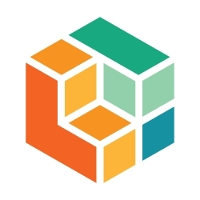A client once told me that the project we were currently working on had been attempted several times previously but had failed. And yet our project was being considered a success. When I asked him what was different about our approach compared to the prior attempts, he said that ours was the only one that allowed the stakeholders to actually visualize the solution. Not only did we have a working prototype of the interface, but we had created other visual samples leading up to the prototype.
Apparently, the other vendors never actually got to the point of visually presenting even a conceptual model for the web application that was needed. They got bogged down in the processes of conducting research, defining the solution, and writing requirements. All of these are critical steps to any digital project, but if left unchecked, they can cause a seemingly never-ending feedback loop that impedes actual progress. If that loop continues long enough, stakeholders get frustrated, discouraged, and worst of all, doubtful.
At LookThink, we’re very visual people. Practically every surface in our office is a whiteboard, and you’ll see sketches all over those surfaces. Sketches often start with dry-erase markers, which become digital wireframes and eventually take shape as low-fidelity prototypes and eventually as pixel-perfect, interactive screens. Our mentality is that it’s never too early to start sketching the solution, and these primitive visualizations help inform and enhance other critical activities in the project. By taking this approach, we gain momentum, buy-in, and trust from our clients.
Here’s a look at the progression for the client mentioned above:

There are a few reasons why prototypes are so important to our team and our clients.
Prototypes help flesh-out requirements
- Let the prototype (or any visual example) be a mechanism for generating, defining, and validating requirements.
- The act of creating a prototype will naturally produce new questions that should be considered (and possibly become requirements).
- You should not let the requirements-gathering process be a hindrance or blocker for making progress on a prototype. Certain pieces of the prototype can always be flagged as “incomplete” if the requirements are still being finalized.
Stakeholder engagement will be better if they can visualize something sooner than later
- In some cases, the success of the project will depend on “selling” the concept to stakeholders. A great way to do that is by creating & presenting a rapid prototype in the beginning.
- After the concept is already complete and approved, a prototype will hold the attention of stakeholders before or during development when progress is more behind-the-scenes. We've found that showing a particular part of the prototype as a reference to what’s being built at a particular time (e.g. We are now loading real data HERE) can be very valuable.
- Prototypes help the client see the finish line...or at least a version of it. They can wrap their heads around the vision, and that’s encouraging.
Prototypes are an important, continuous reference point
- The prototype can be an ongoing reference for everyone involved in the project. It may not always make sense to keep the prototype updated once development starts, but that doesn’t mean it’s worthless. It still contains the vision, which can be useful to reflect back on during key decision-making moments.
- In an Agile project, the prototype serves as a canvas for layering in new features that the client requests. Enhancements can be tested in the prototype first and then, once approved, be built out.
- Even if the project scope or budget does not allow for further iterations of the prototype (and it therefore becomes outdated), it can still be used as a “flag” to rally around. When new team members join the project, stakeholders question their investment, or interested parties are simply curious…show them the prototype!
Prototypes can serve as a conduit for scoping requirements, driving interest, and encouraging engagement throughout the life cycle of the project. To be able to quickly and easily demonstrate (via interactive clicking) how a website or application will function is invaluable to almost every role on a digital project: stakeholders, developers, designers, and third parties. And if that prototype can help ensure that the project retains the same level of interest and excitement from start to finish, even better!
